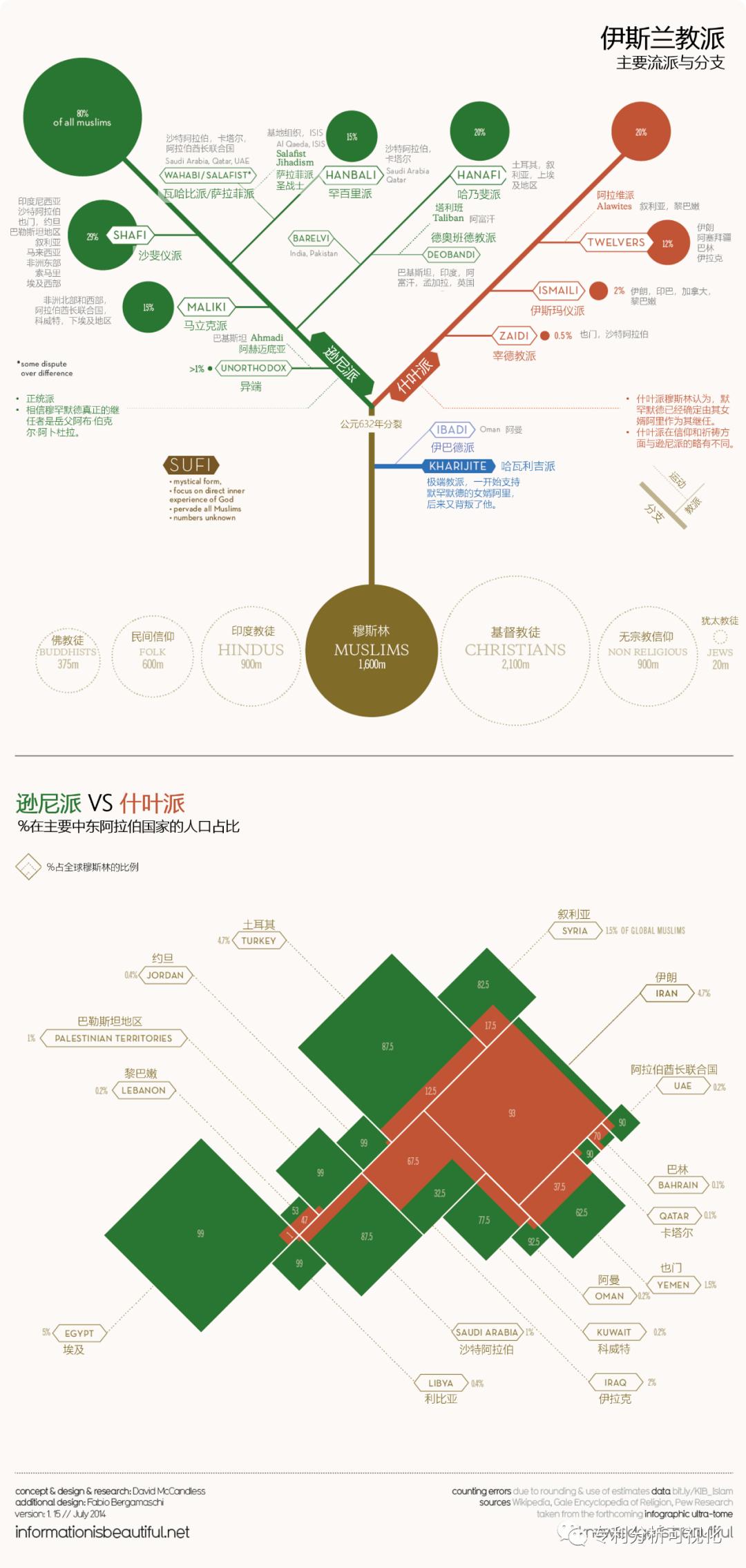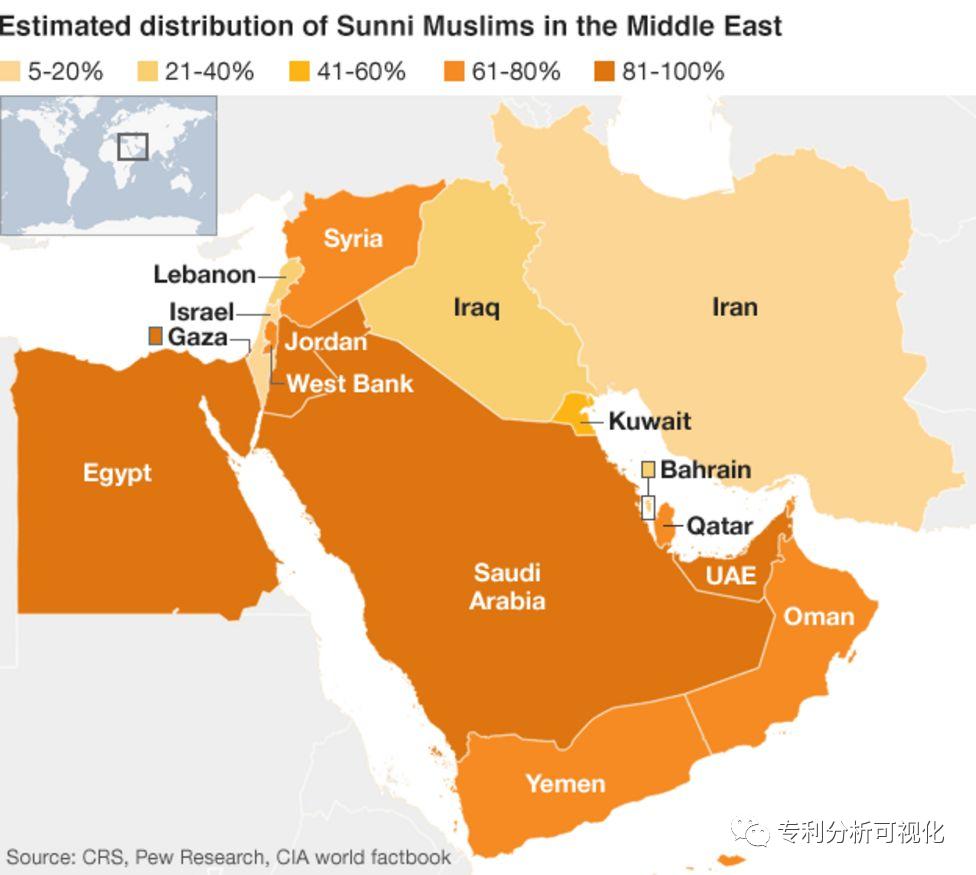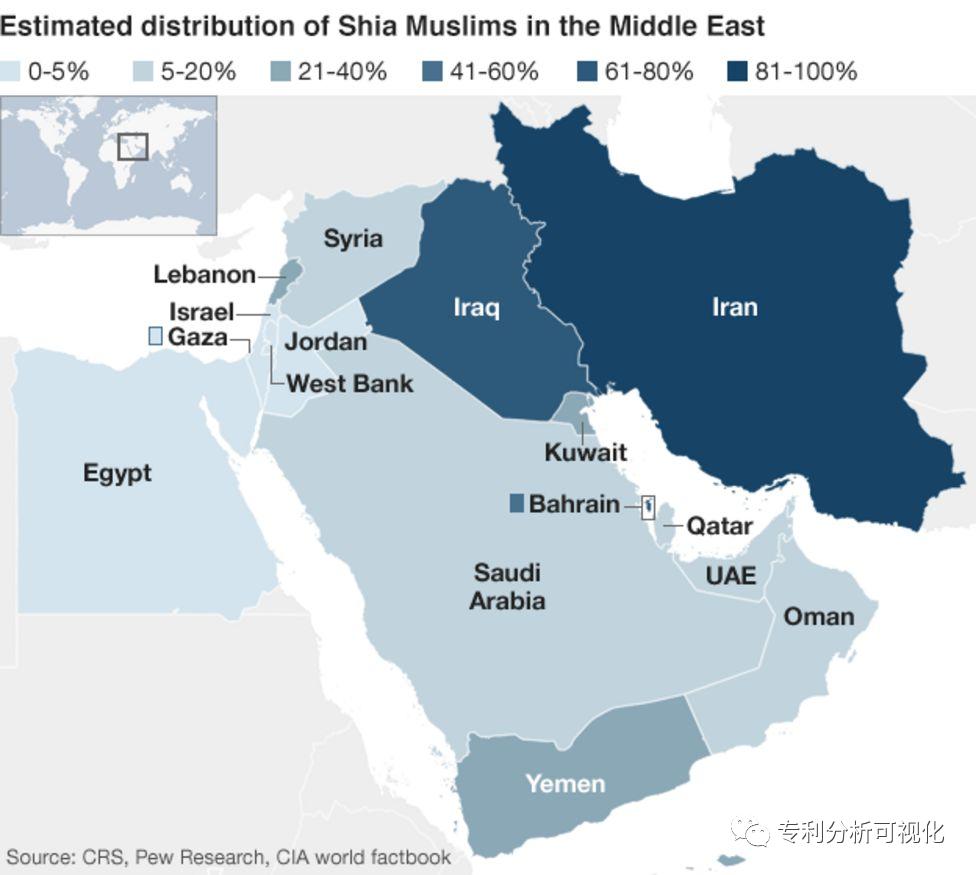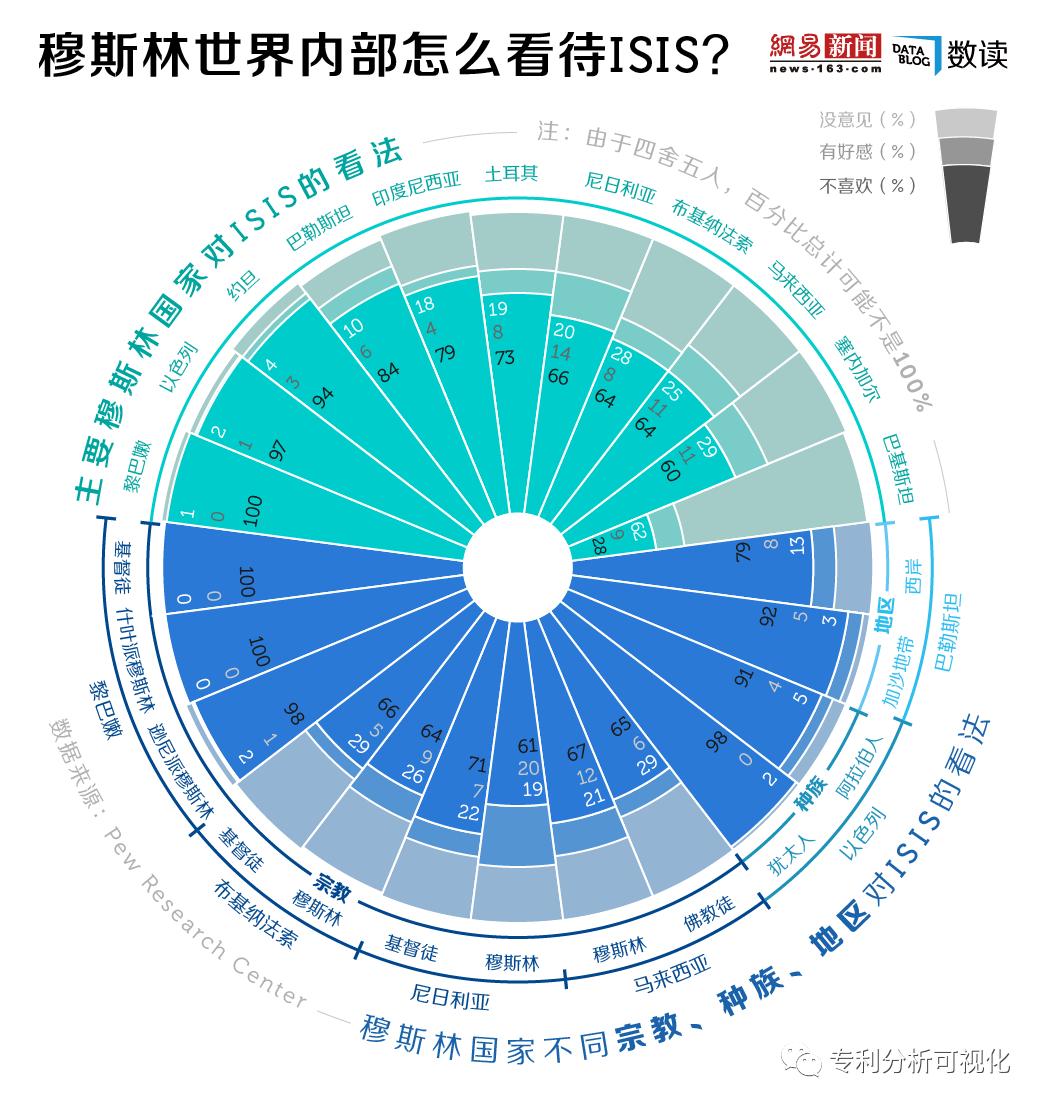A picture to understand the branches and schools of Islam
A picture to understand the branches and schools of Islam, visualization of patent analysis of the original ugly sister

The chart above was created by Information Is Beautiful. Shows the branches and schools of Islam. Islam is the second most religious sect in the world at present, and Christianity is the largest.
Islam is divided into Sunni and Shia. The conflict and division between Sunni and Shia Muslims began with the debate about the legal heir of Muhammad. In 632, Muhammad died. Because he didn’t specify his successor during his lifetime, a conflict broke out in the Arab Empire for the caliph (meaning the successor of the messenger of God, the political and religious leader of the empire). As a result of this conflict, Islam is divided into two factions. One is the majority supported by most Muslims, and later called "Sunnis"; Another faction composed of supporters of Muhammad’s cousin and son-in-law-"Ali faction", later called "Shia".
Shiites are still a minority among Muslims today, accounting for about 10% to 15% of the 1.6 billion Muslims. (The author estimates and rounds off the number of Shiites in all Muslims, which is 20% in the figure, but it may actually be lower than 20%. )
Distribution map of Sunnis: Muslims living in African countries north of the Sahara desert are mostly Sunnis, and Saudi Arabia, Indonesia, Bangladesh, Syria and Palestine are mainly Sunnis.

Distribution map of Shiites: Iran is the only country where Shiites are the state religion. Iraq and Bahrain are also Shia-majority countries. One third of the population in Lebanon is Shia. In addition, Shiites are mainly distributed in Afghanistan, Kuwait, Pakistan and Syria.

Today’s political conflicts in the Islamic world are often religious, which is also a reflection of the traditional religious conflicts between Sunnis and Shiites. For example, the war between Syria and Iraq, and the war between Saudi Arabia and Iran lasted for nearly eight years.
How do Muslims view ISIS?
Although they all read the same Koran, different branches and factions have different understandings and interpretations of the Koran. For example, organizations such as ISIS, an extreme Wahabi Sunni Muslim militant group. ISIS believes that they guide their behavior according to the Koran, claiming to be the most authentic Islamic believers.
But from the beginning, other Muslims have repeatedly stressed that ISIS did not follow the scriptures seriously. For centuries, jurists and theologians of different factions, whether Sunni or Shia, have been looking for a reasonable and systematic way to understand the Koran (which expresses various legal, religious and metaphysical issues in all aspects in a complicated and detailed way) and the Hadith (which records the words and deeds of the Prophet Muhammad, with dozens of volumes and hundreds of thousands of verses). These verses are often difficult to understand or seem contradictory. These jurists and theologians from different factions of Islam classify these scriptures according to their credibility, and then use them in law and theology on the basis. But ISIS didn’t do this. ISIS members just found some words in the Koran and Hadith to support their actions.

Image source: Netease Digital Reading
In the Muslim world, most people do not agree with ISIS. In 2015, the Pew Research Center published a survey report this year, which said that the attitudes of major Muslim countries towards ISIS are roughly divided into three levels:
Strong opposition: Countries represented by Lebanon, Israel, Jordan and Palestine strongly oppose ISIS. In Lebanon, more than 98% people, whether Shia Muslims or Sunni Muslims, have a bad impression on ISIS; 91% Arabs in Israel despise ISIS;; 84% people in the Palestinian territory do not like ISIS, whether in the Gaza or in the West Bank.
There are different opinions, but the negative views are not so strong: Indonesia, Turkey, Nigeria, Malaysia and Senegal have different opinions on ISIS, but the negative views are not so strong. Nigeria’s attitude is quite different because of religious beliefs. Only 7% of Christians have a good impression of ISIS, which accounts for 20% of Muslims.
No problem with ISIS: Pakistan is the most favorable place for ISIS, with only 28% having a negative opinion of ISIS and 62% having no problem with extremist organizations.
It is everyone’s responsibility to protect copyright.
If you need to reprint, please contact backstage.

↑ Long press to identify the QR code to follow ↑
Micro signal: patent analysis visualization:,. Video applet likes, tap twice to cancel like watching, tap twice to cancel watching.
Original title: "A picture to understand branches and schools of Islam"
Read the original text